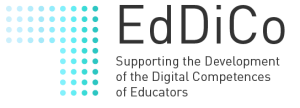Digitale Identitäten – Wer bin ich im Netz?
Der durchschnittliche Internetnutzer verfügt über mehr als 25 Internetkonten, die für unterschiedlichste Absichten angelegt werden. Neben Accounts für E-Mail-Dienste oder soziale Netzwerke, benötigen Nutzer Zugang zu Lernplattformen oder Onlineshoppingdiensten. Jedes dieser Internetkonten repräsentiert eine individuelle Digitale Identität. Jede dieser Identitäten umfasst wiederum unterschiedlichste persönliche Angaben. Neben Informationen, die zur Authentifizierung eines Users genutzt werden, wie einer E-Mail-Adresse und einem Passwort, benötigen andere Dienste sehr persönliche und sensible Daten, wie die Bankverbindung zum Bezahlen und den Wohnort für die anschließende Lieferung einer Bestellung.
Der Umfang und die Vielfalt der persönlichen Informationen, die eine digitale Identität definieren kann, bieten Cyberkriminellen im Falle eines Datendiebstahls umfangreiche Möglichkeiten zum Datenmissbrauch. Der Schutz digitaler Identitäten gewinnt deshalb einen immer höheren Stellenrang.
Im Rahmen des Kurses werden wir beleuchten, wie eine Digitale Identität definiert wird und mit welchen Attributen eine solche Identität ausgestattet sein kann. Wir erläutern außerdem, mithilfe welcher Methoden eine Identität authentifiziert werden kann und welche Techniken zum Identitätsmanagement zur Verfügung stehen.
Ein weiterer Abschnitt des Workshops beschäftigt sich mit unterschiedlichen Angriffsformen auf Digitale Identitäten und gibt diesbezüglich Ratschläge, wie Nutzer ihre Daten besser schützen können. Ein wichtiger Bestandteil in diesem Zusammenhang ist das Wissen über sichere Passwörter, mögliche Angriffe gegen Passwörter und sichere Methoden zur Passwortspeicherung.


